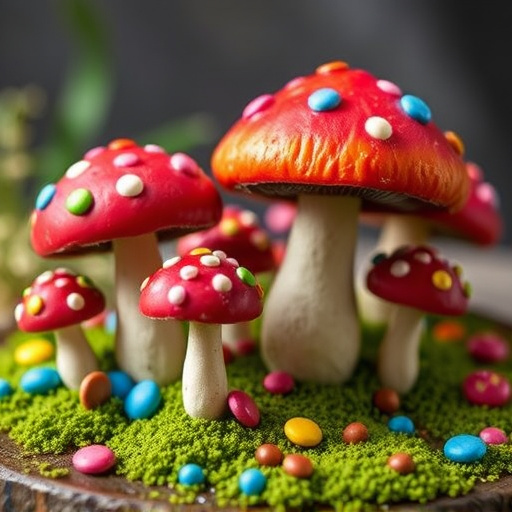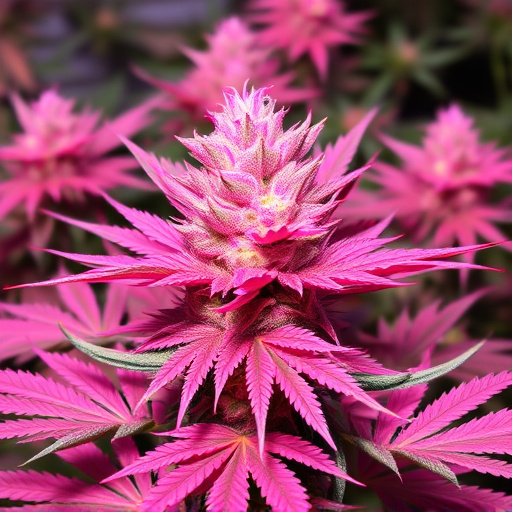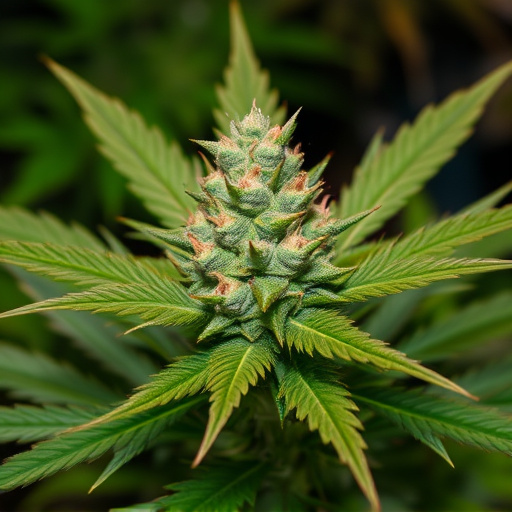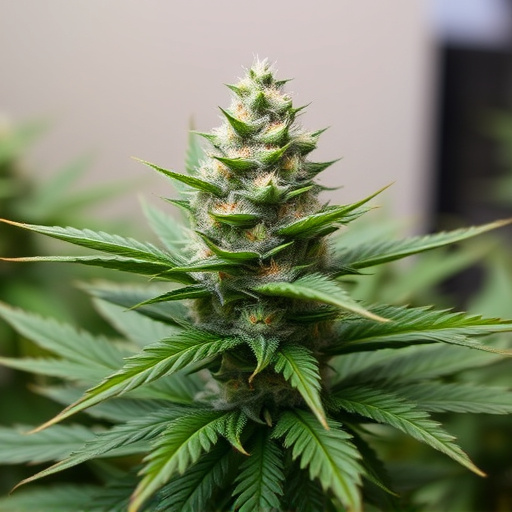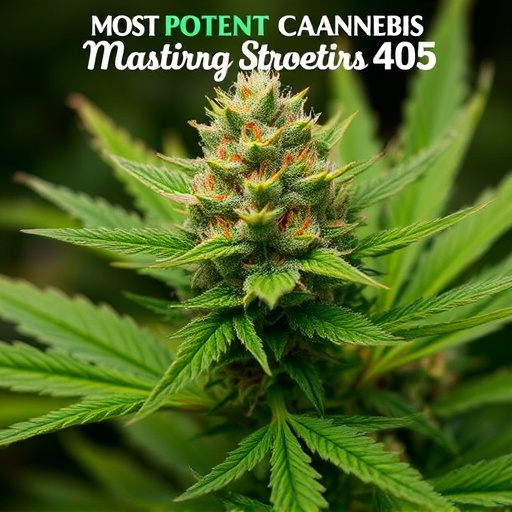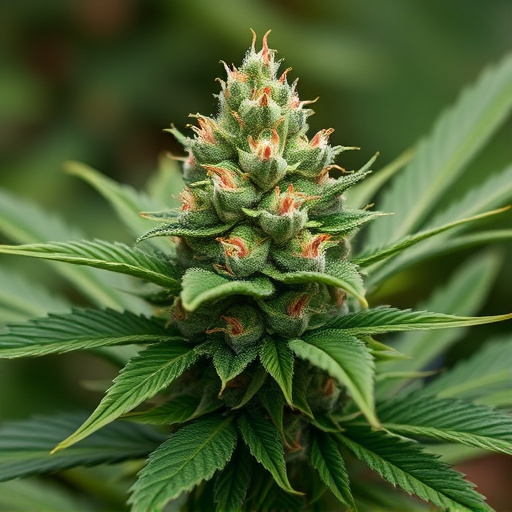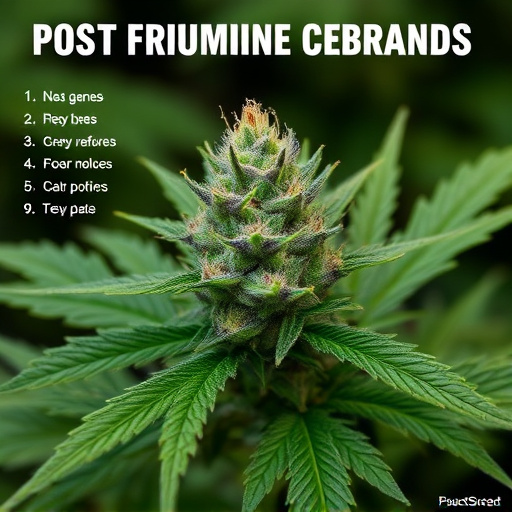Cannabis genetics play a crucial role in determining strain potency and visual appeal, influencing scent, flavor, bud structure, and resin production. Environmental factors, especially temperature, interact with these genetics to shape cannabis appearance, growth rates, and cannabinoid/terpene profiles. Precise temperature control maximizes the expression of desirable genetic traits, leading to visually stunning and potent cannabis strains, including the most potent available for therapeutic or recreational use.
Unravel the fascinating interplay of genetics and temperature, two pivotal factors shaping the appearance of cannabis. This article delves into the intricate dance between cannabis genetics—the very foundation of its unique characteristics—and environmental warmth, revealing how they collaborate to create a diverse spectrum of visual features. From understanding the genetic makeup of various strains to exploring the effects of temperature on their development, we uncover insights that shed light on the growth of not just any cannabis, but specifically, the most potent cannabis strains.
- Understanding Cannabis Genetics: The Building Blocks of Appearance
- Temperature's Role in Cannabis Development and Visual Features
- Exploring the Impact on Most Potent Cannabis Strains
Understanding Cannabis Genetics: The Building Blocks of Appearance

Cannabis genetics are the foundation upon which its appearance, including features that contribute to its potency, is built. Different cannabis plants have unique genetic makeup, dictating their inherent characteristics such as scent, flavor, and visual aesthetics. Understanding these genetics is crucial for cultivators aiming to produce the most potent cannabis strains. Each strain possesses distinct traits passed down through generations, with specific gene expressions influencing everything from bud structure to resin production. By studying these genetic variations, growers can select or develop plants that offer the desired effects, ensuring the highest quality and potency in their final products.
The interaction between genetics and environmental factors, such as temperature, further shapes cannabis appearance. Temperature plays a pivotal role in triggering various physiological processes in cannabis plants, affecting growth rates, resin synthesis, and terpene production—all of which contribute to the plant’s visual appeal and potency. Optimizing conditions, including temperature control during specific growth stages, allows cultivators to maximize the expression of desirable genetic traits, ultimately creating visually striking and potent cannabis strains.
Temperature's Role in Cannabis Development and Visual Features

Temperature plays a pivotal role in shaping the development and visual features of cannabis plants, impacting their overall appearance and, potentially, their potency. In controlled environments, maintaining optimal temperatures is crucial for healthy cannabis growth. Studies have shown that different temperature ranges can influence critical terpene and cannabinoid profiles, leading to variations in the final product. For instance, warmer temperatures generally encourage faster growth but may hinder the production of certain desirable terpenes known for their therapeutic properties.
When cultivating high-potency cannabis strains, understanding temperature’s effect becomes vital. These strains often require precise environmental control to reach their maximum potential. Cooler nights and moderate days can promote the synthesis of myrcene, a common terpene associated with sedative effects, contributing to the overall potency and aroma. Conversely, higher temperatures might stimulate the growth of limonene-rich plants, known for their uplifting scents, thus altering the desired characteristics sought by enthusiasts and medical patients alike.
Exploring the Impact on Most Potent Cannabis Strains
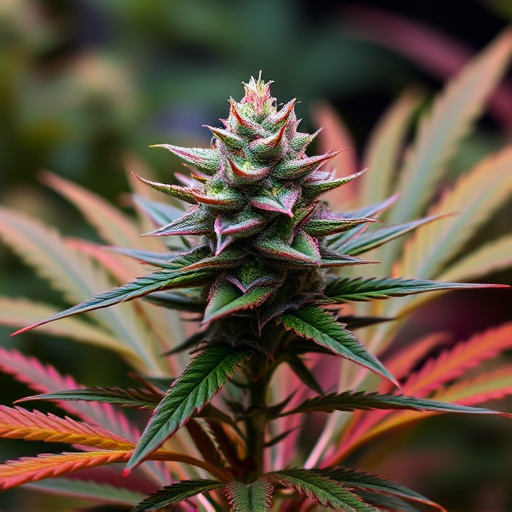
The quest for the most potent cannabis strains has driven researchers and cultivators alike to uncover the intricacies of genetic and environmental factors. Among these, temperature plays a pivotal role in shaping the final appearance and potency of cannabis plants. By understanding how genetics interact with thermal conditions, cultivators can optimize their techniques to produce superior, high-potency varieties.
Genetic predisposition, coupled with precise temperature control, allows for the manifestation of unique cannabinoid profiles. Different strains exhibit varying sensitivities to heat, influencing the rate at which they mature and accumulate active compounds. Exploring these interactions reveals the potential to enhance specific cannabinoids like THC and CBD, thereby creating the most potent cannabis strains available on the market, catering to consumers seeking enhanced therapeutic benefits or intense recreational experiences.
Cannabis genetics and temperature play a dynamic role in shaping the appearance of this versatile plant, with significant implications for cultivators and consumers alike. Understanding these factors is key to unlocking the full potential of most potent cannabis strains. By meticulously controlling genetic heritage and environmental conditions, growers can optimize visual characteristics and enhance the overall quality of their crops, ultimately providing users with superior experiences tailored to their preferences.



